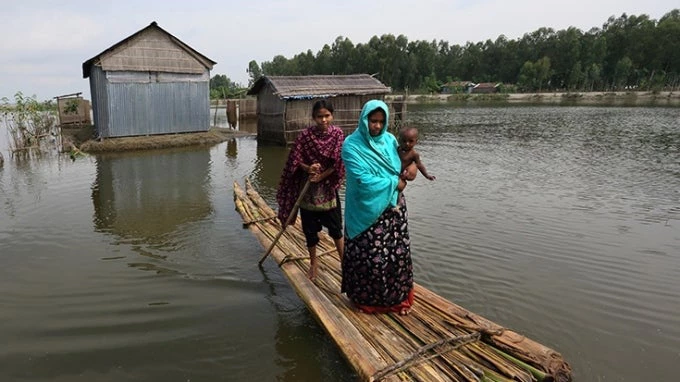
Mahfuzul Hasan Bhuiyan/World Bank
How can a country vulnerable to natural disasters mitigate the effects of climate change? In Bangladesh, resilient communities have shown that by using local solutions it is possible to combat different types of climate change impacting different parts of the country.
Every year, flash floods and drought affect the north and north-west regions. Drinking water becomes scarce, land becomes barren and people struggle to find shelter for themselves and their livestock. In the coastal districts, excessive saline makes it impossible to farm and fish.
The Community Climate Change Project (CCCP) has awarded grants to around 41 NGOs to address salinity, flood and drought-prone areas. With the help from local NGOs, communities innovated simple solutions to cope up with changing climate and earn a better living benefiting at least 40,000 people in the most vulnerable districts.
Raising the plinths of their homes in clusters has helped more than 15,000 families escape floods, and they continued to earn their livelihoods by planting vegetables and rearing goats on raised ground. Vermicomposting has also helped to increase crop yields. In the saline affected areas, many farmers have started to cultivate salinity tolerant crabs with women raising their income level by earning an additional BDT 1500 a month from saline tolerant mud crab culture in high saline areas.
Watch how communities use these three solutions to tackle climate change impacts.


Join the Conversation